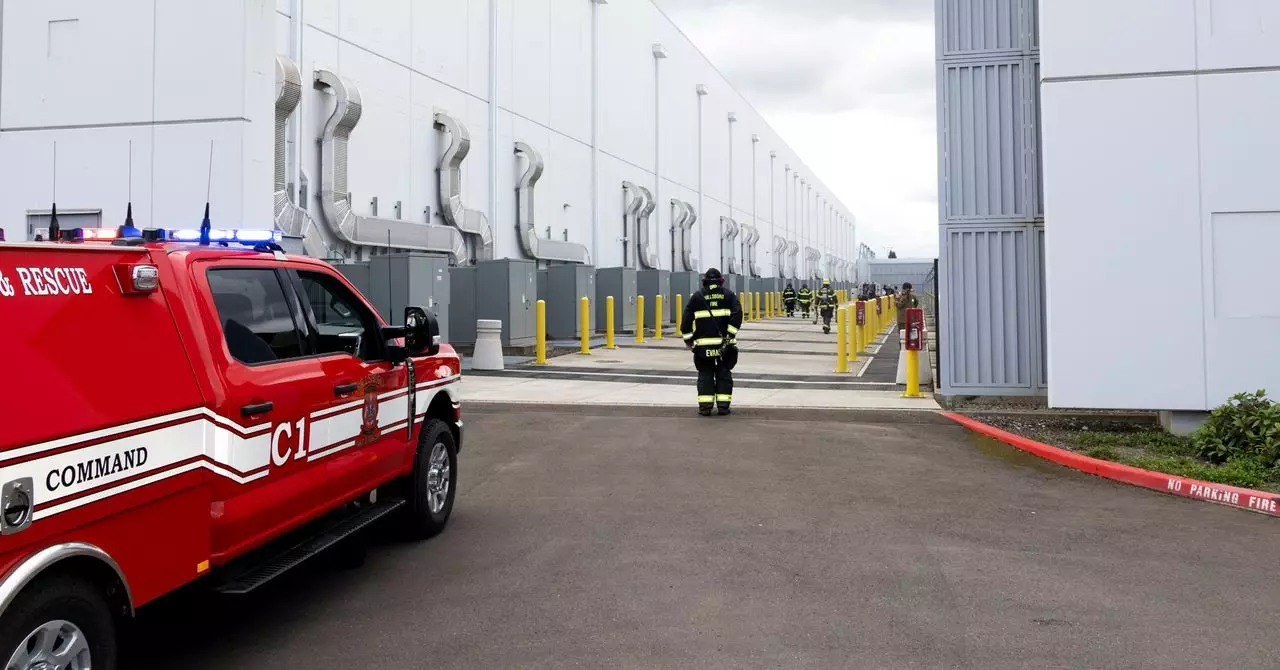In a world increasingly driven by artificial intelligence and massive data processing, the backbone of this digital revolution—the data center—has become an unassuming yet critical infrastructure. However, recent events highlight that these facilities, often seen as fortresses of technological progress, harbor latent risks that merit urgent scrutiny. The fire incident at a large-scale data center in Hillsboro, Oregon, associated with Elon Musk’s X platform, serves as a stark reminder that even the most sophisticated systems are vulnerable to catastrophic failures. It exposes the fragility of modern power setups amid escalating demands driven by AI’s insatiable appetite for data and computational power.
What makes this incident particularly significant is that it wasn’t caused by an obvious hazard like lithium-ion batteries, which have become infamous for their fire risks. Instead, the trouble originated inside a Schneider Electric UPS cabinet—a vital component responsible for ensuring uninterruptible power supply. This shift away from battery failure spotlights a different threat vector: the complexity and vulnerability of electrical and mechanical components handling enormous loads, especially as data centers scale up to meet AI demands. The fire’s origin underscores the urgent need to critically evaluate the operational safety measures in these high-stakes environments.
The Real Risks Beyond Lithium-Ion Batteries
Traditionally, the spotlight on data center fires has focused on lithium-ion batteries, given their explosive potential and prior incidents. But this episode emphasizes how other electrical systems—like large UPS cabinets—can be equally, if not more, dangerous. These systems, designed to safeguard continuous power, contain heavy, energy-dense components that are susceptible to failures, overheating, and faults under extreme loads. As artificial intelligence applications push data centers towards their maximum capacity, the risk of thermal runaway and electrical failures increases exponentially.
Many experts believe that outdated or overburdened systems, coupled with insufficient cooling and monitoring, create a perfect storm for fires. The incident suggests that even with standard safety features, the complexity of modern power infrastructure can produce unforeseen hazards. It highlights an uncomfortable truth: reliance on traditional safety protocols might be insufficient in the face of exploding computational loads, making a compelling case for reinvigorated safety standards tailored explicitly to AI-driven infrastructure.
The Growing Strain of AI and Its Impact on Data Center Safety
The rise of generative AI models has transformed data centers from simple storage hubs into sprawling, energy-hungry machines. As these demands surge, the power systems supporting AI core servers must operate at or beyond their designed limits. This increased load results in higher temperatures, increased electrical stress, and a greater likelihood of component failures. The incident in Hillsboro underscores this reality—overburdened power supplies can ignite, causing disruptions and risking data loss, financial damage, and safety hazards.
This situation signals a fundamental flaw in how we scale these facilities. The existing safety mechanisms, originally designed for more modest loads, may not keep pace with the aggressive expansion of AI capacities. As a consequence, safety measures need to evolve, incorporating advanced real-time diagnostics, enhanced cooling systems, and fail-safe redundancies specifically addressing the unique stresses posed by large AI workloads.
Implications for the Future of Data Center Design and Management
In light of this fire, a broader reflection emerges on how we approach building and managing infrastructure vital to AI’s future. The event reveals that complacency—assuming that existing safety protocols are sufficient—is perilous. Instead, it calls for a paradigm shift: we must prioritize resilience, redundancy, and proactive detection of electrical anomalies.
Industry leaders need to invest heavily in smarter monitoring systems that can anticipate failures before they occur. Enhanced fire suppression technologies and alternative power backup strategies that go beyond traditional UPS systems should also be considered. This event must catalyze a reevaluation of safety standards and push for regulations urging rigorous testing and certification of power equipment—especially when large-scale, AI-centric operations are involved.
Beyond technological upgrades, a cultural shift within the data center industry is imperative: safety cannot be compromised for efficiency or cost-saving measures. The resilience of AI infrastructure is fundamental not only to business continuity but to the broader digital economy. As these facilities become even larger and more complex, ensuring their safety must become a core component of our technological vision—one that recognizes the terrifying consequences of neglecting any aspect of their electrical integrity.

